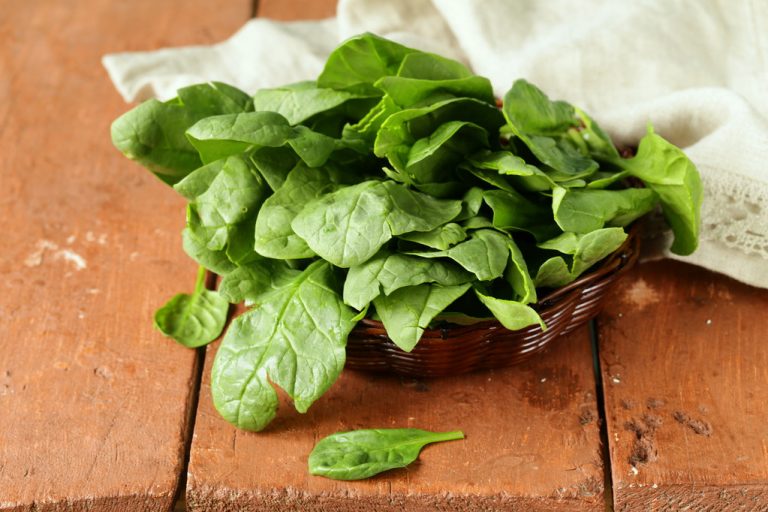Vegetables should not be missing from your daily meals due to their high nutritional content and numerous health benefits. However, certain vegetables are even healthier than others. We explain which ones.
Healthy Foods: Watercress is ranked as one of the healthiest vegetables
A rather unusual result: watercress received a full 100 points in the study because it contains all the valuable ingredients and is therefore considered the healthiest type of vegetable. It is also a welcome medicinal plant, which is used, for example, in the traditional Indian healing art of Ayurveda for various diseases and to treat sexual complaints. In addition, it has a very good effect on hyperthyroidism and digestion and regulates blood sugar levels.
Leafy greens: spinach, arugula, or nettle
Dark green leafy vegetables are among the healthiest foods on the planet. In terms of whole foods, these vegetables offer the highest nutritional value per calorie. Spinach, nettle and parsley, for example, contain a noticeable amount of iron, calcium and magnesium and thus have a positive effect on the central nervous system. Green leafy vegetables also include lettuce, iceberg and lamb’s lettuce, dandelion and arugula, which can be eaten up to twice a day.
More power with kale
If it were up to the health value, Grünkuehl should actually be on the menu every week. Cabbage is just as rich in important nutrients and even a small portion of 100 g covers our daily requirement of vitamins C, K and A. Grünkuhl also contains a lot of dietary fibre. Mustard oils, which are responsible for the cabbage taste, inhibit the growth of bacteria and viruses, are said to lower cholesterol levels and protect against cancer – is there anything healthier?
Healthy vegetables: The red pepper should not be missing
The red pepper shares the top spot in terms of vitamin C with the kale. With a small pepper of 100 g, the daily vitamin C requirement is more than covered. The peppers do not only develop their nutrient potential by heating, like kale, for example, but can be eaten as a crunchy raw food snack.
Pumpkin: the supplier of vital substances
Pumpkins belong to the armored berries and are therefore botanically closer to fruits than vegetables. A portion of pumpkin soup and your daily requirement of vegetables is covered. It can be that easy. Pumpkin contains all the important vitamins and is just as rich in minerals. The high vital substance beta-carotene not only provides the colour, but also has a positive effect on our skin and eyes. The orange giant is also good for high blood pressure. Pumpkin season is mainly from the end of August to November. Above all, the trend towards vegan nutrition gave the pumpkin a real boom.
Broccoli: A star among vegetables
Hated by many, dearly loved by some. Broccoli is very versatile. It contains vitamin C, K, A, folic acid, vitamin B6 and B2, as well as the minerals calcium, magnesium and potassium. Even trace elements of iron, zinc and copper can be found in the green vegetables. The nutrients protect against cancer and other diseases and should therefore not be missing in any kitchen.
Carrots as a slimming agent
The carrot, also called carrot, turnip or root are herbaceous vegetable plants and there are up to 300 different varieties in the EU. They are real beta-carotene bombs, just like the pumpkin, which protect our cells and are good for the eyesight thanks to the converted vitamin A.
The sweet potato: An inconspicuous wealth of nutrients
From the outside, you would not think that the sweet potato is capable of such a variety of vitamins. It’s not a potato, it’s a tuber. In addition to vitamins A, B1, B3, B5, B7, B9, vitamins C, E and K, sweet potatoes contain a wealth of minerals. Potassium, magnesium and calcium are particularly important here. The sweet potato helps to take in all the necessary nutrients, especially during pregnancy, and also regulates blood sugar.
The tomato: Simple and so versatile
Low in calories, intense taste, appetizing, digestive – the round vegetable holds true wonders and the positive effects on our body are endless. The plant pigment carotene lycopene is not only responsible for the red color, but also acts as a strong antioxidant, which can reduce the risk of many types of cancer by up to 45 percent.
Legumes: Beans as a superfood
Beans, whether green, black, red or white, belong to the legumes and are a valuable source of protein, especially in a meat-free diet. Vegans can hardly imagine life without this superfood, as they also contain vitamin K, magnesium, copper, phosphorus and iron. Legumes lower blood pressure and cholesterol levels, thereby reducing the risk of heart disease and diabetes.

